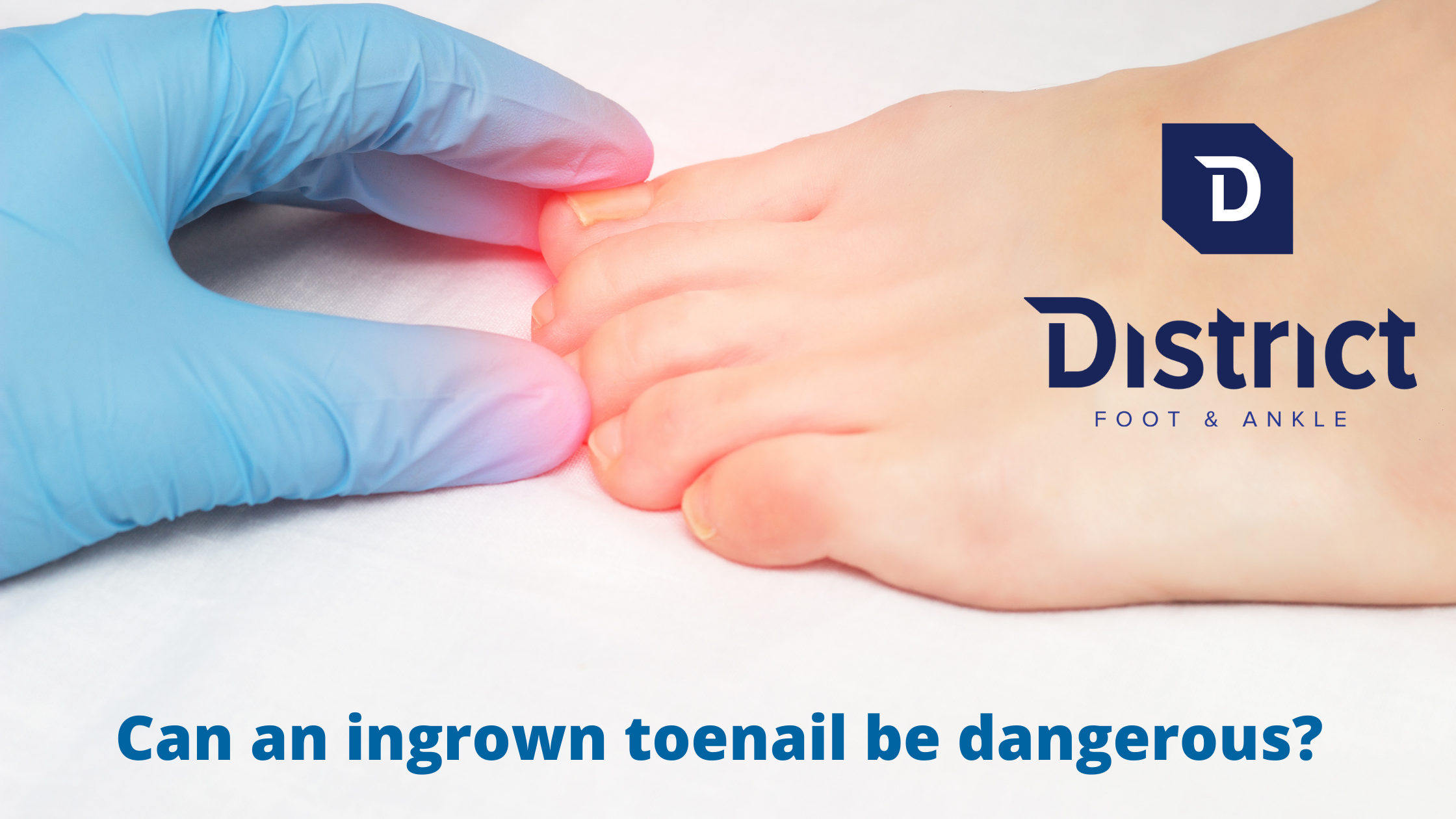Ingrown toenails can be dangerous and if left alone can become more difficult to treat efficiently.
An ingrown toenail occurs when a piece on the side of the toenail pierces the outside skin and causes an inflammatory reaction and/or infection. Common signs of an ingrown toenail include pain, swelling, redness, and drainage (like pus).
In the early stages, the best way to treat this condition is with soaks (warm water with epsom salts), topical antibiotics and a light dressing to protect the toe.
If the condition does not improve and the toe is infected, an oral antibiotic is recommended.
In more moderate to severe ingrown toenails a procedure to removal the ingrown toenail is recommended. The procedure involves numbing the toe with local anesthetic through an injection. Once the toe is numb, a small portion of the edge of toenail is removed and the rest of the toenail is left in place.
This toenail procedure can be done as described above, but in some cases, it can be made a permanent procedure by cauterizing the root (cuticle/matrix). This reduces the likelihood that the ingrown nail will return (the success rate for this procedure is between 75-90%).
Onyfix Nail Correction System
This is a new technology that allows for treat of painful curved and ingrown toenails without pain, invasive surgical instrument or needles.
The Onyfix system is a composite material that is molded into a strip at the base of the toenail and is then hardened. The rigid material in contact with the nail forces it to grow out flatter.
This is a good option for patients that are afraid of needles, very curved painful toenails, or earlier stage ingrown toenails that do not respond to simple measures (likes soaks) but are not severe enough to justify an invasive procedure. It is also an excellent option for high risk patients like with diabetes or poor circulation.
The dangers of an ingrown toenail that goes untreated
If an ingrown toenail goes untreated, it can be extremely unpleasant for the patient because they may require repeated courses of antibiotics by mouth.
Sometimes the skin does not respond well to the antibiotic and remains very inflamed. Inflamed tissue is more difficult to anesthetize with local anesthetic. Inflamed tissue bleeds more which can make the cauterization part of the procedure less effective.
The infection may seed deeper into bone if an ingrown toenail remains untreated. Either long term antibiotics or surgery is the treatment for bone infection.
This is what you should do
If you suspect you have suffering from an ingrown toenail, you should seek treatment by a qualified foot and ankle specialist. Avoid over-the-counter treatments and bathroom surgery. Call Dr. Nodelman today.
For advice on how to avoid an ingrown toenail, check out this link here.

